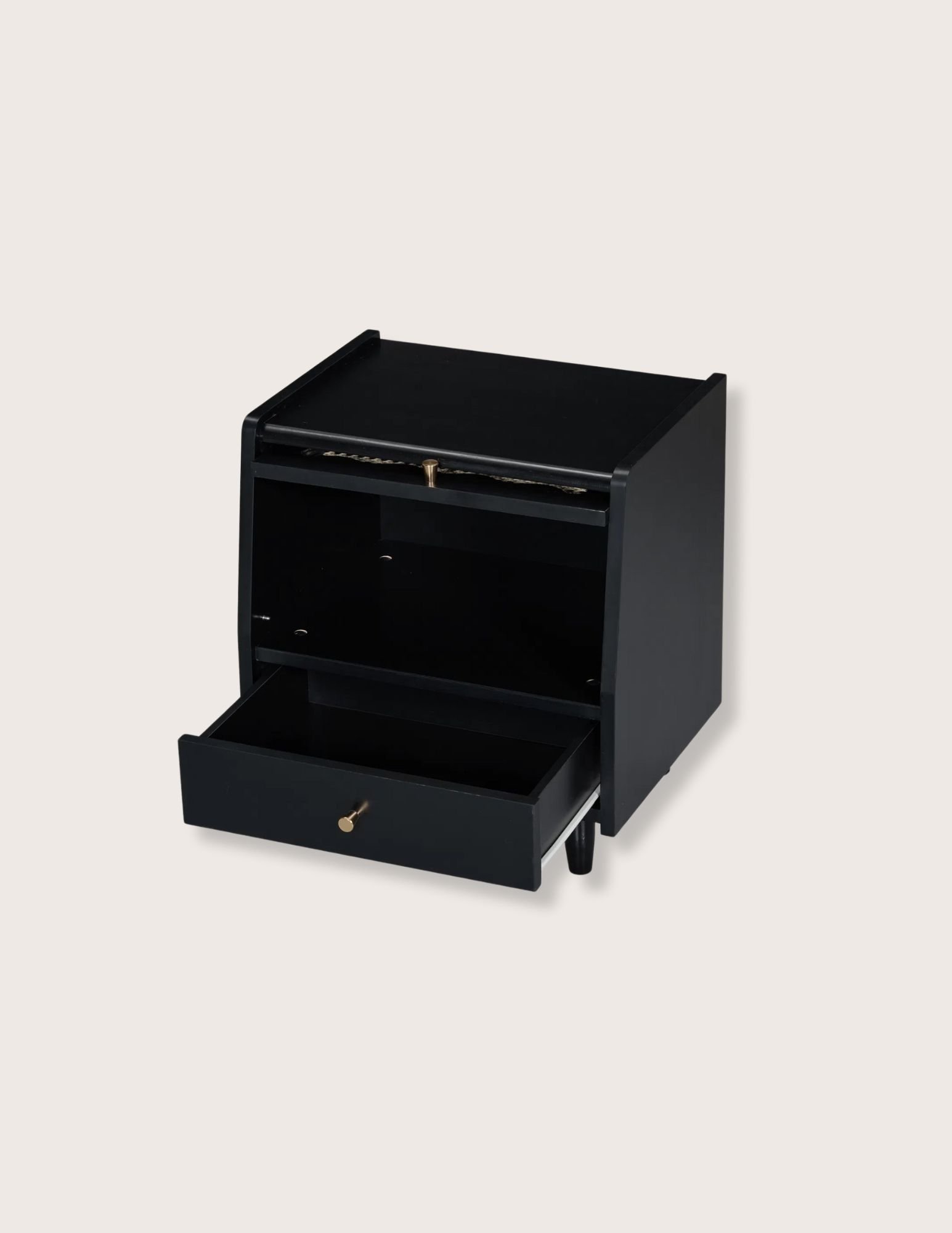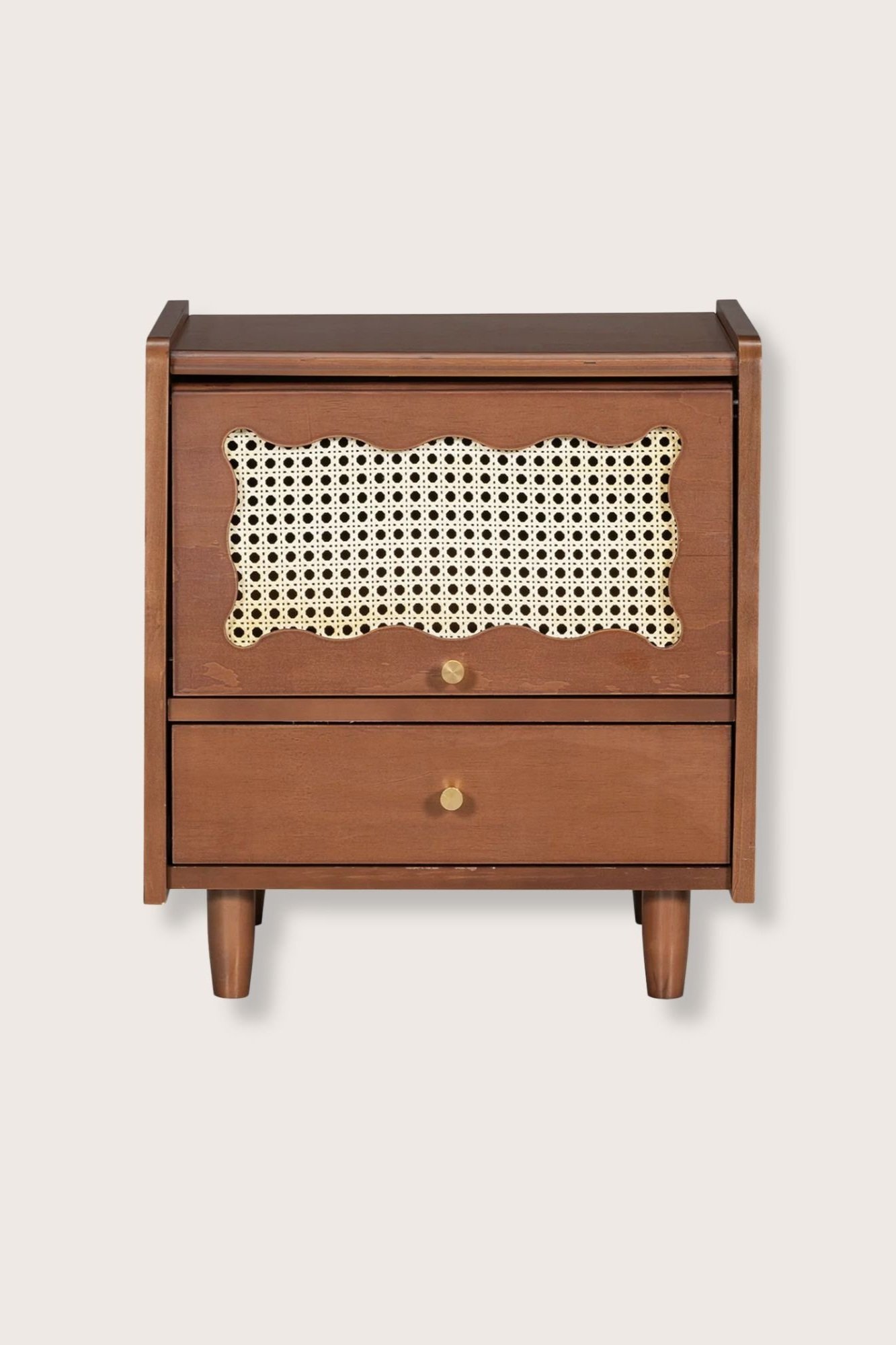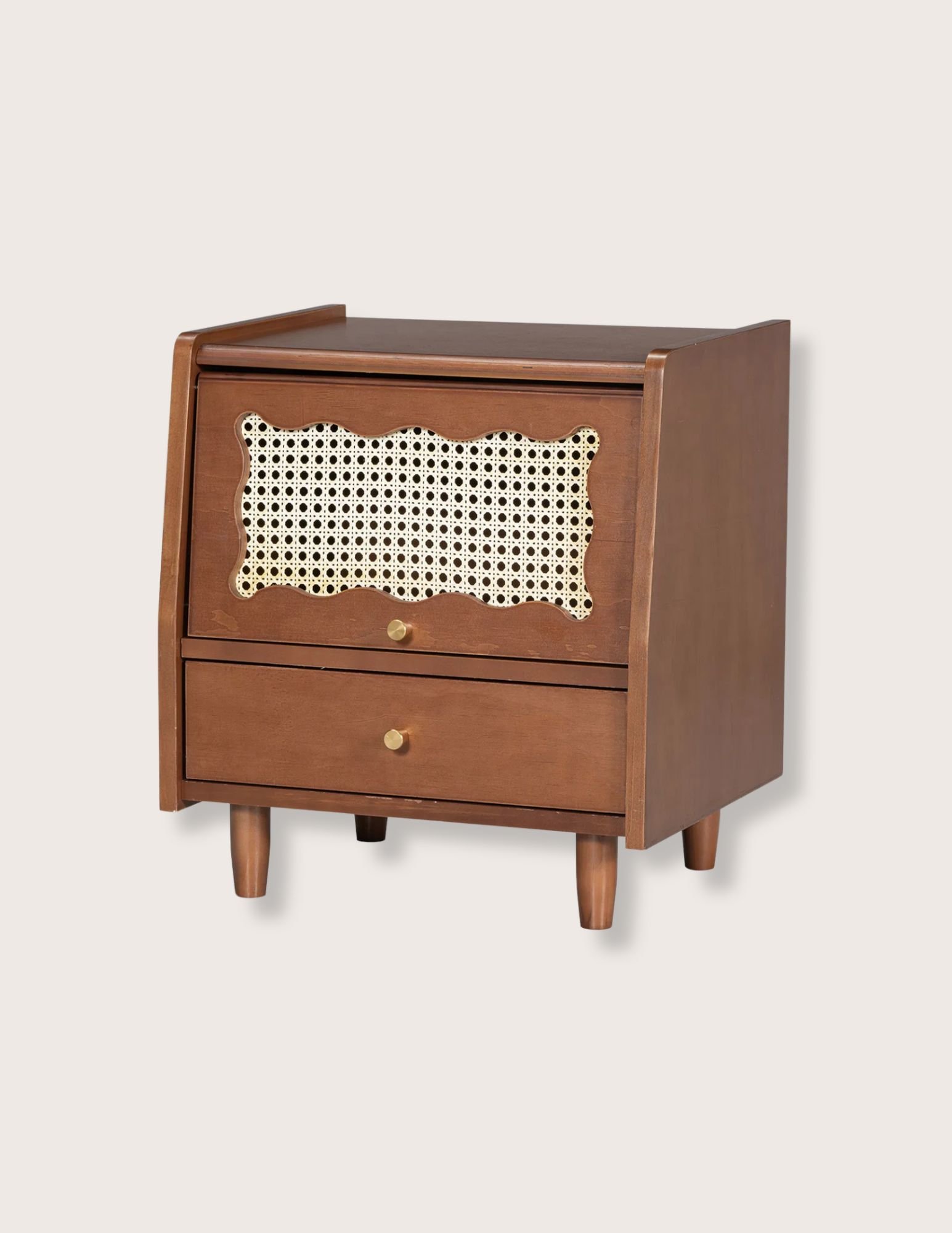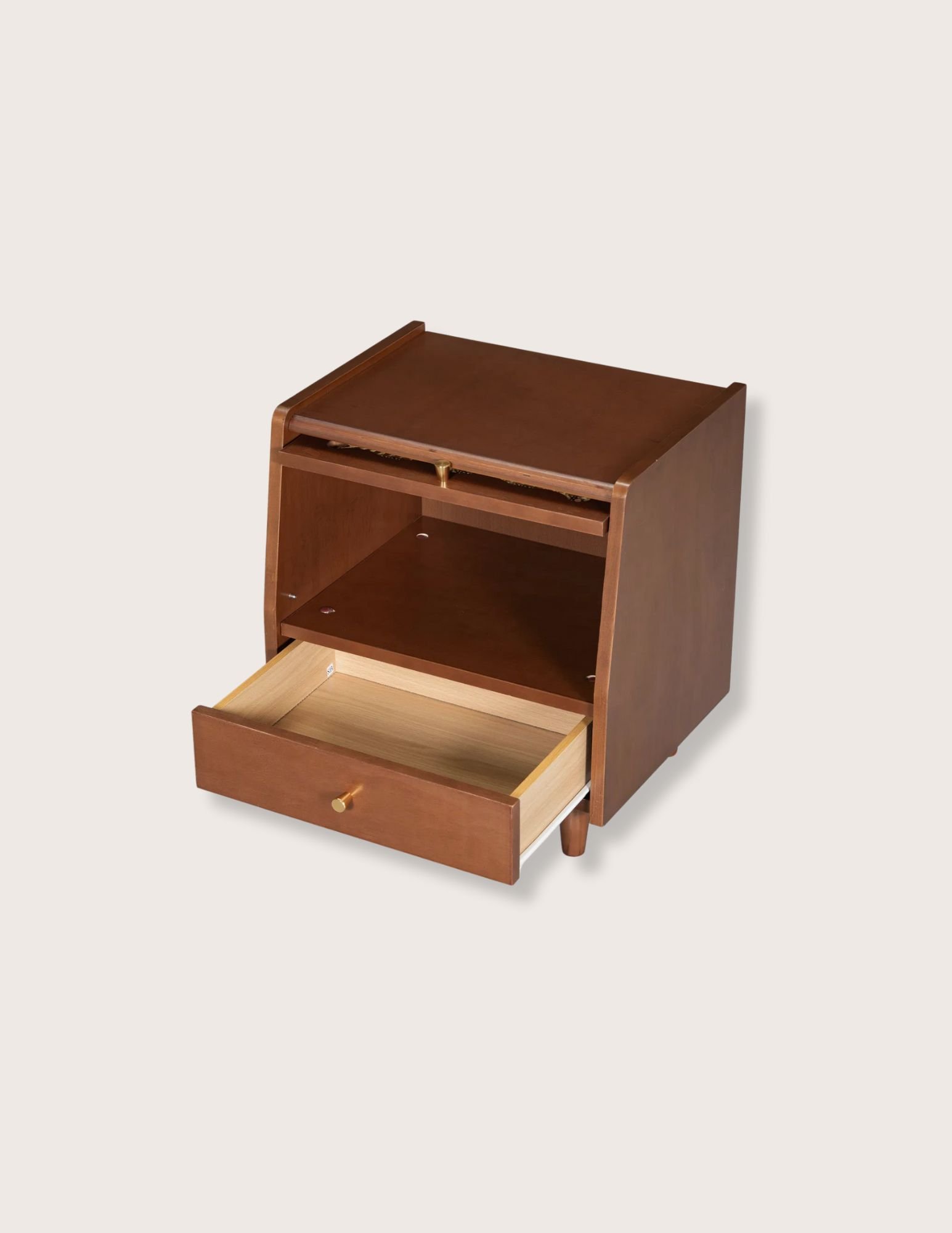 Image 1 of 4
Image 1 of 4

 Image 2 of 4
Image 2 of 4

 Image 3 of 4
Image 3 of 4

 Image 4 of 4
Image 4 of 4





Tami Ash Dresser
Details
Great style requires great storage. With the Tami Ash Dresser you get both, all in one highly fashionable, extremely functional package. Using engineered rattan — a combination of natural rattan and spandex typically found in moisture-proof, sun-resistant, outdoor furniture — this 6-drawer dresser offers incredibly ample storage. Designed for long-term durability, the dresser features four separately installed pine legs, with an additional one at the center for added support. The middle supporting leg also features an adjustable foot pad allowing you to vary the height of the dresser to maximize support while avoiding unnecessary scratches on the floor. On the back of the dresser, two horizontal bars lend strength and stability to the frame while opening holes in the back increase air permeability to the clothes inside. For homes with children or pets, L-shaped metal braces can lock the dresser to the wall to prevent tipping. A beautiful package that will keep the rest of your home looking its best, the Tami Ash Dresser is a fantastic addition to any bedroom.
Editors' Note
On the African continent, rattan is most commonly referred to as, rattan. However, depending on the region and local language, it may also be called mbalu (Sierra Leone), kpè-pun (Côte d’ivoire), mfia (Ghana) or tami (Côte d’ivoire), with the primary species being Calamus Deerratus — the only species of Calamus native to the Continent. The practice of weaving furniture from rattan begins more than five millennia ago in Egypt. Examples and remnants of rattan furniture and baskets have been found in many locations throughout Egypt — from the homes of farmers to the tombs of pharaohs — dating back to 3000 BC. It is believed that as Egypt fell into Roman hands the appreciation for rattan furniture spread throughout its empire, reaching as far as Britain, which would embrace the beauty, durability and affordability of the material. Rattan furniture would reach new levels of European popularity throughout the period of colonization — especially during England’s Victorian era. During that time the British and Dutch East India Companies did much to popularize rattan throughout Europe and the Europeanized societies of the Americas, while supplying the trade through brutal and unscrupulous exploitation of the people and resources of Africa and Asia. Nevertheless, rattan had long been a celebrated material throughout Africa, with rattan basket-weaving traditions playing a significant role in cultures found in several nations, from Ghana and Senegal in the west, to Botswana and South Africa in the south, and Rwanda, Burundi and Kenya in the east. Each tradition attaches different meanings to the various weave patterns and color combinations it employs while creating works of art that function as seating, storage or in any number of other ways. The skills of weaving are often communal, being passed down firsthand from generation to generation, and in many cultures the weaving itself is a communal act. Today, rattan furniture is valued throughout the world for its sustainability and longstanding associations with luxury and leisure. Meanwhile, as appreciation for traditional African artistry grows, amid an equally expanding market of mass-produced and synthetic copies, the production of these goods is often touted as a pillar of economic growth on the Continent.
Details
Great style requires great storage. With the Tami Ash Dresser you get both, all in one highly fashionable, extremely functional package. Using engineered rattan — a combination of natural rattan and spandex typically found in moisture-proof, sun-resistant, outdoor furniture — this 6-drawer dresser offers incredibly ample storage. Designed for long-term durability, the dresser features four separately installed pine legs, with an additional one at the center for added support. The middle supporting leg also features an adjustable foot pad allowing you to vary the height of the dresser to maximize support while avoiding unnecessary scratches on the floor. On the back of the dresser, two horizontal bars lend strength and stability to the frame while opening holes in the back increase air permeability to the clothes inside. For homes with children or pets, L-shaped metal braces can lock the dresser to the wall to prevent tipping. A beautiful package that will keep the rest of your home looking its best, the Tami Ash Dresser is a fantastic addition to any bedroom.
Editors' Note
On the African continent, rattan is most commonly referred to as, rattan. However, depending on the region and local language, it may also be called mbalu (Sierra Leone), kpè-pun (Côte d’ivoire), mfia (Ghana) or tami (Côte d’ivoire), with the primary species being Calamus Deerratus — the only species of Calamus native to the Continent. The practice of weaving furniture from rattan begins more than five millennia ago in Egypt. Examples and remnants of rattan furniture and baskets have been found in many locations throughout Egypt — from the homes of farmers to the tombs of pharaohs — dating back to 3000 BC. It is believed that as Egypt fell into Roman hands the appreciation for rattan furniture spread throughout its empire, reaching as far as Britain, which would embrace the beauty, durability and affordability of the material. Rattan furniture would reach new levels of European popularity throughout the period of colonization — especially during England’s Victorian era. During that time the British and Dutch East India Companies did much to popularize rattan throughout Europe and the Europeanized societies of the Americas, while supplying the trade through brutal and unscrupulous exploitation of the people and resources of Africa and Asia. Nevertheless, rattan had long been a celebrated material throughout Africa, with rattan basket-weaving traditions playing a significant role in cultures found in several nations, from Ghana and Senegal in the west, to Botswana and South Africa in the south, and Rwanda, Burundi and Kenya in the east. Each tradition attaches different meanings to the various weave patterns and color combinations it employs while creating works of art that function as seating, storage or in any number of other ways. The skills of weaving are often communal, being passed down firsthand from generation to generation, and in many cultures the weaving itself is a communal act. Today, rattan furniture is valued throughout the world for its sustainability and longstanding associations with luxury and leisure. Meanwhile, as appreciation for traditional African artistry grows, amid an equally expanding market of mass-produced and synthetic copies, the production of these goods is often touted as a pillar of economic growth on the Continent.

Additional Details
Single Dresser
Capacity: 6 drawers
Color: Ash
Material: Rattan, Pine
Dimensions: 46.66” x 15.75” x 30.20”
Weight: 80.91 lbs
Weight Capacity: 132 lbs
Wipe clean with soft cloth and avoid chemical cleaners
Easily assemble upon arrival
Imported
Made to order
Ships to the continental US in 3-4 weeks


























